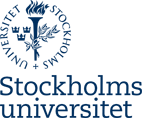Internationella relationer under tidigmodern tid: Några skotsk-skandinaviska fallstudier
Från och med giftermålet mellan Kung James den VI av Skottland och Anna av Danmark 1589, var det tydligt att Skottlands närmaste diplomatiska allians i Skandinavien (och även i Europa) var med Danmark-Norge. Däremot visar ny forskning av bland andra Alexia Grosjean, Anna Kalinowska och Cynthia Fry, att skotsk diplomati var mer komplex än endast Stuart-Oldenburg alliansen.
I studien dekonstrueras de intrikata relationerna mellan huset Stuart och de skandinaviska kungadömena, Moskva samt Polen-Litauen. Stora händelser inom internationella relationer som exempelvis avtalen i Knåred (1613), Stolbova (1617) och Altmark (1629) omvärderas genom studiens fokus på intervention och list från huset Stuart och särskilt de två diplomaterna Sir James Spens of Wormiston och hans styvbror Sir Robert Anstruther. Fallstudierna visar tydligt att ett perspektiv på internationella relationer genom endast dynastiska allianser, bara ger oss halva historien.
International Relations in the Early Modern Period: Some Scottish-Scandinavian Case Studies
PFrom the marriage of King James VI of Scotland to his Danish bride, Anna of Denmark, in 1589, it was apparent that Scotland’s closest diplomatic alliance in Scandinavia, and indeed Europe, was to be with Denmark-Norway. However, ongoing scholarship by the likes of Alexia Grosjean, Anna Kalinowska and Cynthia Fry have shown that Scottish diplomacy was more complex than a straight-forward Stuart-Oldenburg alliance.
In this paper, the complexity of Stuart relations with the Scandinavian kingdoms, Muscovy and Poland-Lithuania in the first decades of the seventeenth century are dissected. Major interventions in international relations such as the treaties of Knåred (1613), Stolbova (1617) and Altmark (1629) are re-evaluated through the lens of Stuart intervention and subterfuge practice by two diplomats in particular – Sir James Spens of Wormiston and his step-brother, Sir Robert Anstruther. From these studies it is evident that a simplistic view of international relations through the lens of dynastic alliances tell only a partial tale.






